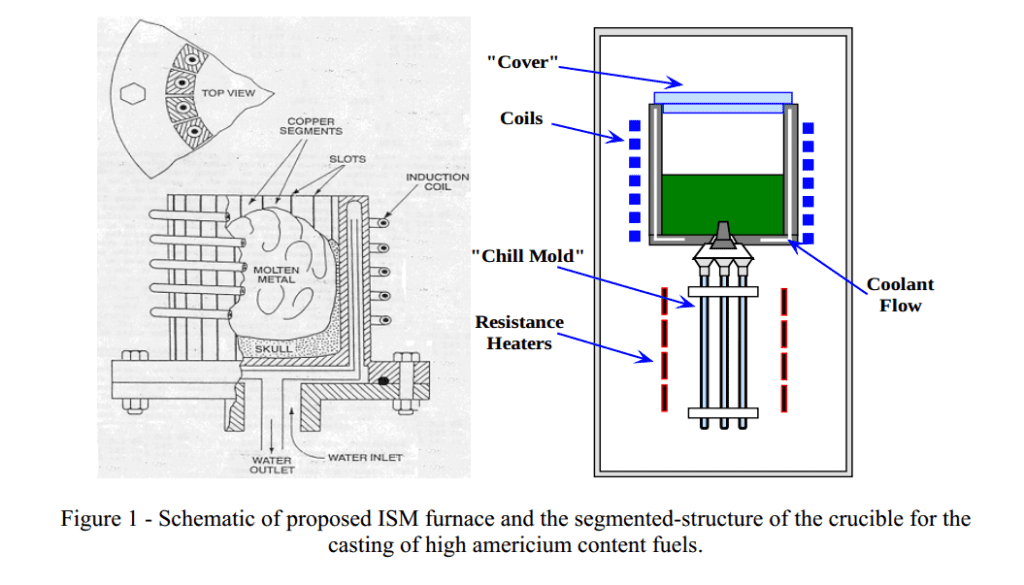Induction Heating Process & Testing
Numerical Simulation of an Induction Heating Process in an Induction Skull Melting Furnace
Taide Tan, Randy Clarksean, Yitung Chen, Hsuan-Tsung Hsieh, University of Nevada – Las Vegas
Mitchell K. Meyer, Argonne National Laboratory
ABSTRACT
In this paper an Induction Skull Melting (ISM) system and the induction heating process in the furnace for casting Metallic Fuel Pins (MFP) are considered and simulated numerically using the commercial finite element CFD package FIDAP (Fluent, Inc.). The governing equations are discussed and the solution of these equations with FIDAP is discussed. A segmented-structure of the crucible and how does this kind of structure help to form a “skull” during the fast induction heating process are studied. The induced current is created directly in the “skin” depth of the metal feedstock inside the crucible and the “skin” depth itself serves as the secondary circuit due to the skin effect or Kelvin effect. FIDAP is applied to this system to determine the power deposition profile in electrically conducting region, i.e. the feedstock. The calculated power is subsequently used a source term in the heat equation to calculate the temperature profile in the ISM system.

The image above shows the general geometry associated with the Induction Skull Melter (ISM). The figure below shows some of the heat transfer results associated with the induction heating and the solidified and molten material.

Want to know more? This is an abstract of a paper published in 2004 and can be found in the Proceedings of CHT-04, ICHMT International Symposium on Advances in Computational Heat Transfer held April 19-24, 2004, Norway.
